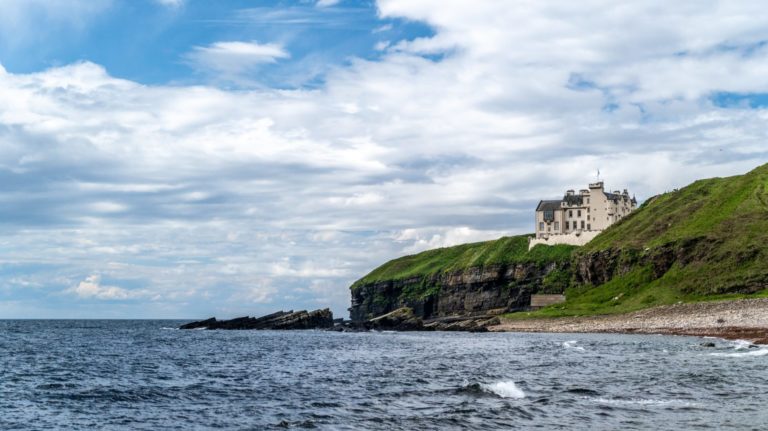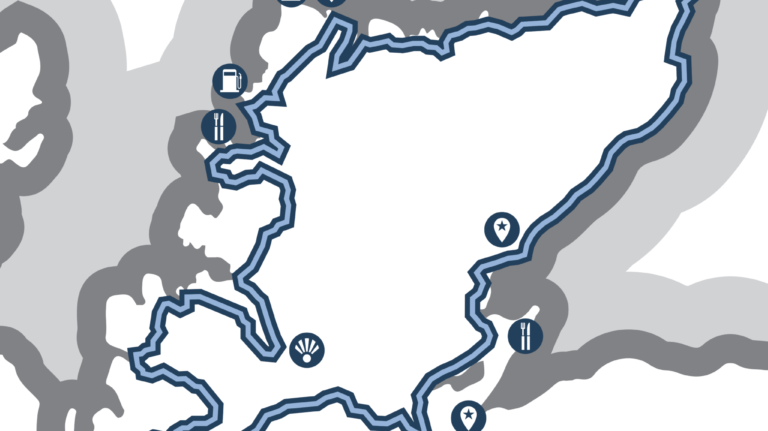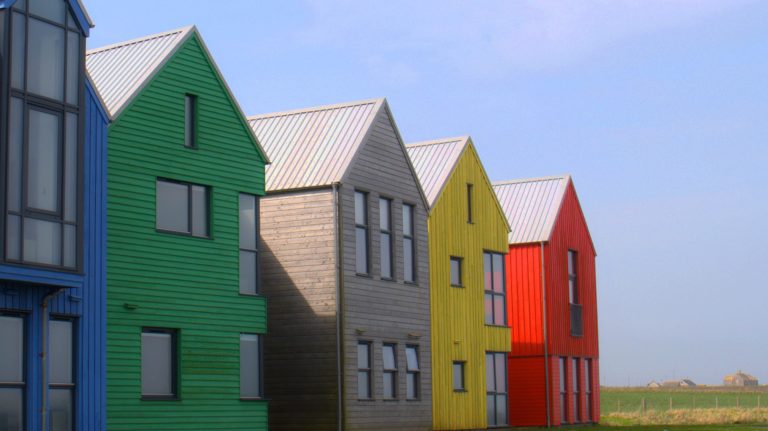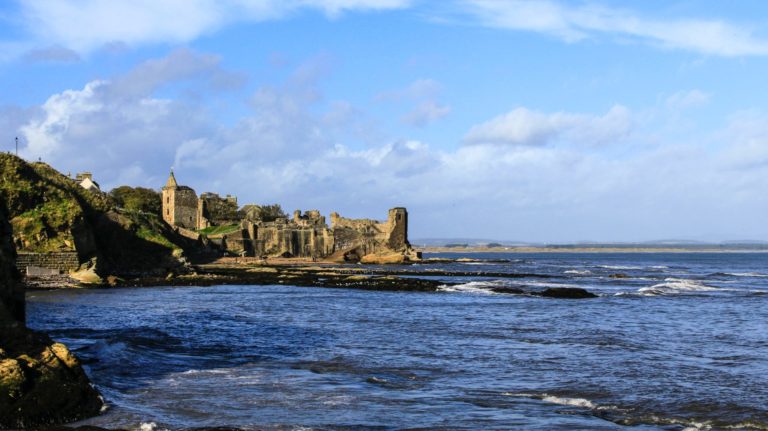TOP 12 DRIVING ROUTES IN THE UK
Hit the open road this summer on the best driving routes in the UK. We’ve mapped out routes with multiple stops across the UK, making it easier for you to find a route to drive.
Explore scenic driving routes in Scotland, Northern Ireland, England, and Wales and discover the best spots in the UK.
Click on the map to find out more…
SCOTLAND DRIVING TOUR ROUTES
ROUTE 1 : GLASGOW TO GLENCOE


This route from Glasgow to Glencoe explores southwestern Scotland in all its picturesque glory, with the slow transition from metropolitan to rural Scotland making this one of the most scenic road trips in the UK. If you’re planning a driving route for your holiday in Scotland, Glencoe and the surrounding area is a fantastic drive that showcases some of the most beautiful areas of the country, with some fascinating attractions to stop off at along the way.


There are a few places to park up if you want to admire the Loch in all its glory, with several places in Luss to stop for coffee, too. If it’s just a scenic spot you’re looking for, you could park up at the popular Firkin Point, a stunning stop-off with panoramic views of the Loch just over 15 miles along the A82. There are also find toilets here which are available to the public. You’ll find another great viewpoint at the Inveruglas Pyramid, an innovative structure built in 2015 as part of Scotland’s Scenic Routes project. The Pyramid is made up of 31 steps which, from the top, offer picture-perfect views of the Loch.
Further along the A82, you may want to stop off for a short walk to the Falls of Falloch. You’ll find a signposted car park just south of the waterfall; the walk from the car park is estimated to take around 20 minutes, giving you a good opportunity to stretch your legs and appreciate the surrounding area. There are also picnic benches by the falls which are perfect if you want to take some snacks.
Further along your drive, you’ll pass Pulpit Rock, an unusual looking rock which is viewable from the road. The Rock was historically used as a place of worship during the 19th century, and is also known in Gaelic legend as Clach nan Tarbh or ‘The Stone of the Bulls’. If you want to explore more Scottish legends along your drive, you could also take a small detour to The Lochan of the Lost Sword, a small loch which is said to be the resting place for a number of ancient Scottish swords belonging to figures such as Robert the Bruce. There’s parking available at Tyndrum Lower train station or Pine Trees camping site, from which you’ll have to hike to the Lochan; it’s an easy walk which is suitable for all fitness types.
Your journey will continue north, where you’ll pass Lochan na h-Achlaise on your left and the larger Loch Ba on your right; you can stop off at Loch Ba viewpoint for the best view of the water and rolling Scottish mountains. There’s also another viewpoint further along your route at Rannoch Moor Viewpoint, which has a marked car park for you to park up and admire the beauty of Rannoch Moor.
As you near Glencoe, there are plenty of car parks dotted along your drive where you can truly appreciate the surrounding area. Glencoe Valley Viewpoint has a spacious car park on the side of the road, and is a wonderful place to take some pictures of the Scottish mountain backdrop and winding waterfalls. Your journey will finish in Glencoe, known as one of the most beautiful glens in Scottish Highlands, and a wonderful place to finish your drive.


Glencoe Valley, with Buachaille Etive Mor dominating the skyline
WHAT TO EXPECT ON THIS JOURNEY


- The route is inland but does drive along the length of a couple of large bodies of water (Loch Lomond, Loch Tulla), crosses over the famous River Clyde, and as you drive along Loch Lomond’s edge you can enjoy views across the water and over to Ben Lomond mountains.
- The route follows an A-road (a well built-up road, one below a motorway), however, weather conditions will inevitably be variable so it is worth checking weather conditions on your day of travel.
- There are also lots of locations to stop at, either for sightseeing or entertainment (cafes, activities, etc.).
- As you drive closer to Glencoe, the views from the car are postcard perfect. The magnificent views and countless stop-off points around the Glencoe area truly make this one of Scotland’s most scenic driving routes.
ROUTE 2 : NORTH COAST 500


One of the most famous driving routes in the UK, the Scottish North Coast 500 is a must for any road trip list. The route begins at Inverness Castle and – as the name suggests – promises around 500 miles of beautiful beaches, scenic spots, castles and distilleries. We’ve jotted down a few of our recommended stops, although the list of potential activities is almost endless. Ideally, you’ll want to set aside a week or two to truly appreciate the beauty of this trip and see all that Scotland’s north coast has to offer.
THE ROUTE
Your journey will begin at Inverness Castle, which in itself is a great place to visit. First built in the 11th century, the Castle is an impressive sandstone structure which you can visit at the start or end of your drive. From the Castle, you’ll drive north along the east coast along the A9 across the Cromarty Bridge. Around 37.5 miles into your journey, you’ll come across Glenmorangie Distillery, arguably one of the most famous distilleries along the North Coast 500 route.
There are a few other distilleries along your road trip which are well worth a visit, too. Clynelish Distillery, Old Pulteney Distillery, and Wolfburn Distillery are all within easy reach of the road, and would make a great stop for anybody interested in knowing more about Scotch Whiskey.


Around 17.5 miles from Glenmorangie Distillery, you’ll find Dunrobin Castle and Gardens, which is a perfect spot for any Scottish history enthusiasts. Dunrobin Castle is the largest great house in the Northern Highlands, boasting beautiful gardens and stunning coastal views. There are a few other castles dotted along your journey too, such as the Dunbeath Castle and Gardens on the east coast of Caithness, as well as the nearby Castle and Gardens of Mey. All the castles and grounds along your route have car parks and, as castles are an integral part of Scotland’s history, promise a rich insight into what made Scotland’s north coast what it is today.
Your drive will follow the A9 along the east coast, breaking off onto the A99 at Latheron. The A99 is a straightforward drive which will lead you to the legendary John O’Groats, a village famous for its north-eastern tip which, together with Cornwall’s Land’s End, forms the longest distance on mainland Britain. This is a popular place to take a picture to remember your journey!
From John O’Groats, follow the A836 westward across the northern coast of Scotland. This is a beautiful section of the drive; you’ll be able to see for miles across the Highlands as the road winds its way across the rural north. Eventually, you’ll break away from the A836 onto the A838, which will take you over the Kyle of Tongue Bridge, dip under Loch Eriboll, and continue on to Durness.
Here, there’s a fantastic scenic spot at Sango Bay Viewpoint, where you can park up and admire the sandy beach and turquoise water of Sango Sands. There are plenty of stunning beaches to take advantage of on your drive down the west coast, such as Clachtoll Beach in Sutherland, Mellon Udrigle Beach north of Gairloch, and Applecross Beach, which is at the southern end of your drive.
Your journey down the west coast will take you through some wonderful Scottish villages and towns, including Lockinver, Gairloch, Fearnbeg, Applecross and Strathcarron, all of which are a wonderful way to experience Scottish culture. The west coast drive may be slightly more difficult than the east coast roads, especially when taking into account the famous Applecross Road, which can prove to be quite challenging.
The last leg of your journey will be the southern stretch from the west to east coast, back to Inverness Castle. Although slightly out of your way, Loch Ness is just 13.2 miles away from the Castle if you fancy one last adventure. As one of the most famous lochs in all of Scotland, Loch Ness is a beautiful place to visit, with plenty of car parks, cafés and scenic spots dotted around its edge – it would make the perfect end to your North Coast 500 trip.


WHAT TO EXPECT ON THIS JOURNEY


- There are a range of different types of roads that visitors will travel on when exploring this region of Scotland, but the majority of roads are country roads. Visitors should familiarise themselves with the Highway Code, with particular attention to navigating single track roads.
- While many of the roads on the North Coast 500 route are easy to navigate, there will be some challenging roads as the road weaves in and out of Scotland’s rugged coastline.
- Applecross Road is one of Scotland’s most famous routes, for its beauty and unusual shape. However, Applecross road can be quite challenging for some drivers, so do take your time and enjoy the views as you navigate your way.
- Due to the length of this road trip, it’s advisable to take an emergency breakdown kit with supplies such as food, water, a torch and warm waterproof clothing.
ROUTE 3 : EDINBURGH TO THE ANGUS COAST


This route is an extension of the famous Angus Coastal route, and instead begins in Scotland’s stunning capital of Edinburgh. From here, the route will take you over the Queensferry Crossing into Dundee, through the Kingdom of Fife and onward to Aberdeen, with plenty of places to stop off and explore what the Scottish east coast has to offer. If you’re looking for a scenic driving route for your UK holiday, the east coast of Scotland is definitely one to consider!
THE ROUTE
Your route will begin in the beautiful capital of Edinburgh, home to Edinburgh Castle: a wonderful place to explore the history and culture of Scotland. The castle is over 900 years old and still stands proudly on the imposing Castle Rock, although if you want to walk around the castle you may need to book in advance.
From Edinburgh, your route will follow the A90 towards The Queensferry Crossing, one of three famous bridges connecting Edinburgh to Fife. Your journey will take you northward along the east coast, where you’ll drive through Aberdour. This idyllic seaside village is well worth a visit and is a picture-perfect place to stretch your legs.
If you fancy a walk on the beach, the beautiful Silver Sands Beach is within easy reach of your route, or for those who enjoy castle visits, Aberdour Castle is a great place to explore some more Scottish history. The castle is arguably one of the oldest in Scotland, and boasts charming gardens which are perfect for a leisurely stroll.


Your journey along the east coast is made up of A-roads, making the drive a reasonably straightforward one. The views are stunning, with plenty of places to park up and appreciate the scenery before you. Just over 30 miles from Aberdour, you’ll reach the characterful seaside town of Elie. Here, you might want to stop off at Elie Beach, a popular place for water sports, rock climbing and outdoor activities. Just remember to take a towel if you decide to go for a swim! If you’re feeling peckish after your visit to Elie, the small town of Anstruther is only 6 miles further along your route, and is famous for having the best fish and chips in all of Scotland.
Just 14 miles further into your journey, you’ll drive through St Andrews, famous for its prestigious university and multiple golf courses. For any golf enthusiasts, this is a wonderful place to stop and explore. You can take a tour through the British Golf Museum or visit The Old Course – also known as The Old Lady – which is considered to be the oldest golf course in the world. There’s also a beautiful beach nearby called West Sands Beach; the sand stretches for almost two miles, making it the perfect place for a seaside walk. St Andrews also boasts a stunning 8-acre Botanic Garden, which is only a stone’s throw from the beach and close to the centre of town.
From St Andrews, your driving route will continue through Fife and across the Tay Road Bridge into the city of Dundee. This will mark the second leg of your journey between Dundee to Aberdeen, otherwise known as The Angus Coastal Route, one of Scotland’s most popular drives following the length of the A92.
If you want to stretch your legs before tackling The Angus Coastal Route, there are plenty of places to stop off in Dundee, with cosy cafes, restaurants and shops to browse through. The Victoria and Albert Museum is well worth a visit, too. Located on the water’s edge and boasting a remarkable exterior, this museum was in fact the first design museum to be opened in Scotland.
From Dundee, your journey along the A92 will take you through a number of charming villages and seaside towns, one being the town of Arbroath. Here, you might want to visit the historic Arbroath Abbey where, in 1320, Scottish nobles wrote the Declaration of Arbroath announcing Scotland’s independence from England – arguably one of the most famous documents in Scottish history. Although the Abbey is currently closed, you can still explore the grounds and take some pictures of its imposing structure.
There are plenty of scenic spots to park up and admire the view on your way to Aberdeen, such as St Cyrus Beach, a picturesque sandy beach which is only a short walk from the road. St Cyrus National Nature Reserve viewpoint is just a stone’s throw away from here, and offers stunning panoramic views of the Angus coast from your car. If you fancy exploring more of the coastline before your journey ends, try stopping off at Dunnottar Castle, a popular tourist attraction located a couple of miles south of Stonehaven. The medieval fortress sits on a rocky outcrop, and strikes an imposing figure on the rugged coastline. There are quite a few steps to climb to get the castle, which might be something to keep in mind, although the climb is definitely worth it to see the beautiful views of the Angus coastline.


WHAT TO EXPECT ON THIS JOURNEY


- This route will see you following motorways and A-roads for the majority of the trip, meaning the roads are well established and easy to drive.
- The speed limit on both motorways and A-roads is 70 miles per hour. At various points, speed limits may change as you pass through towns, villages and built-up areas.
- Be mindful of speed limit changes and weather forecasts. The weather can be quite changeable in Scotland and roads can become slippery when wet, meaning drivers may need to adjust their speed accordingly.
- There are lots of places to stop on this route, for food, activities and views, as this region of Fife is extremely scenic and the views out over the water are incredible. Heading up the Angus Coast Way, you’ll enjoy even more picture-perfect views from the car.

